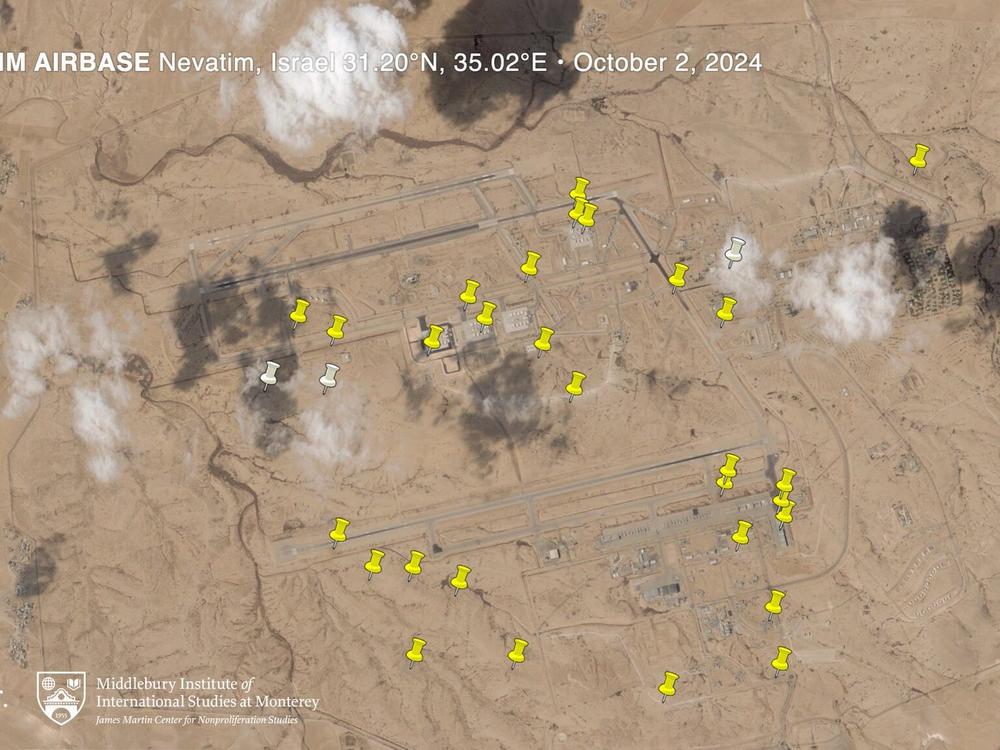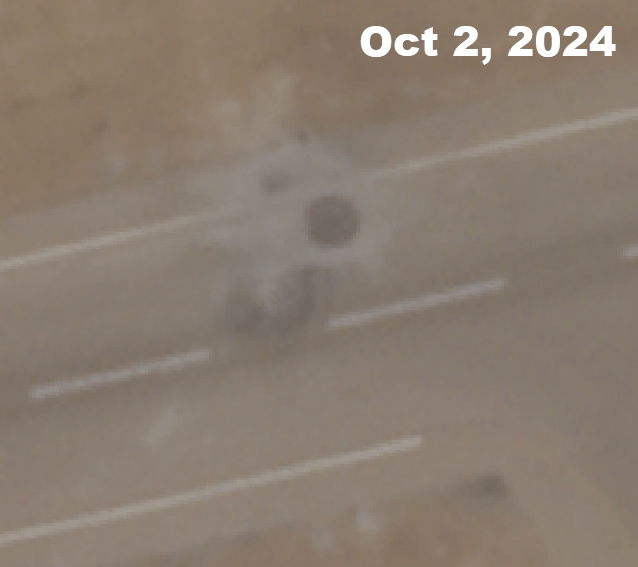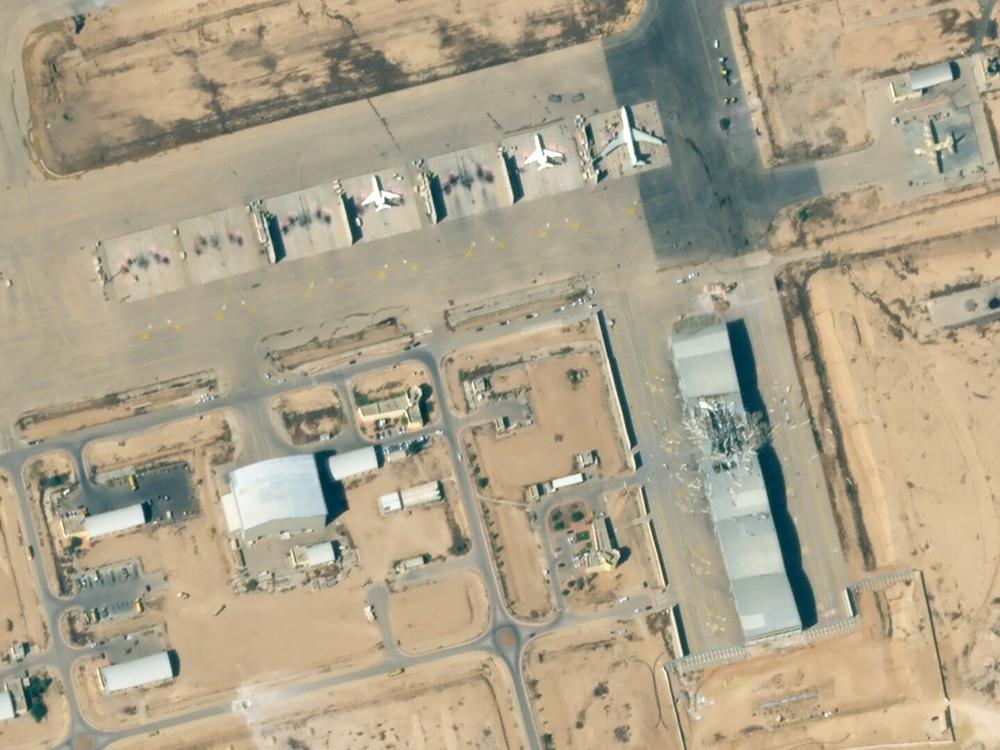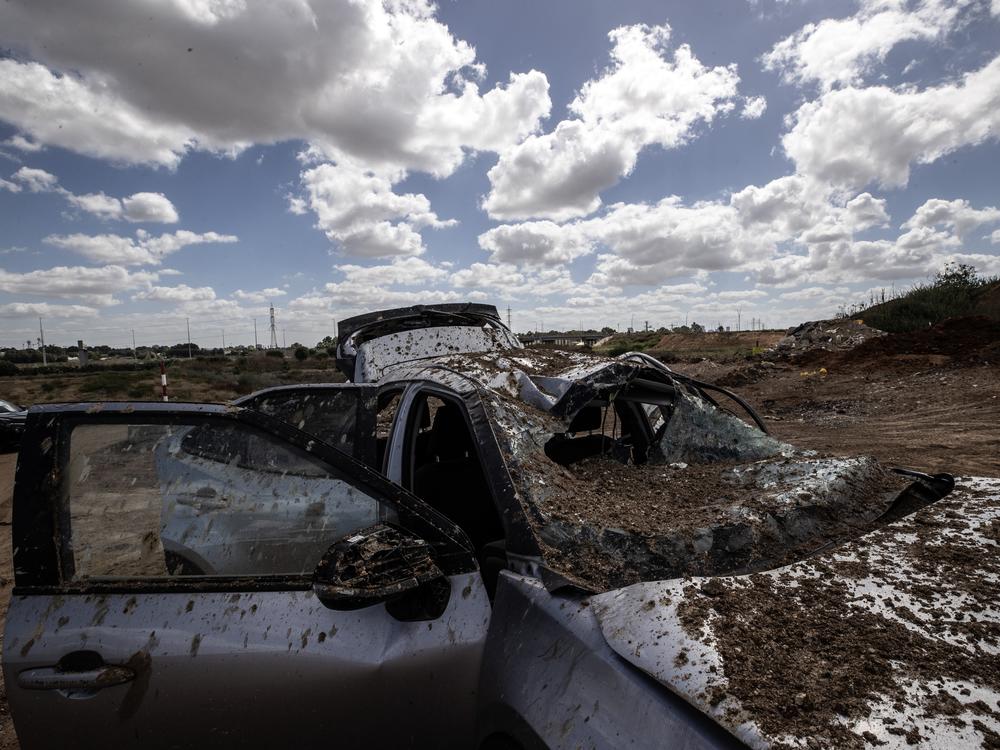Section Branding
Header Content
Satellite images show dozens of Iranian missiles struck near Israeli air base
Primary Content
Researchers have used commercial satellite imagery to identify more than 30 points where Iranian missiles appear to have impacted an air base in southern Israel.
The imagery, taken by the company Planet the day after the strike, shows damaged hangars, buildings, taxiways, and a crater on one of the runways at Nevatim Airbase. Videos posted to social media showed multiple warheads striking the base during the Oct. 1 attack by Iran.
Israel and the U.S. have downplayed the attack, which Israel says consisted of roughly 180 ballistic missiles. Israel said many were intercepted by its missile defenses. Two U.S. destroyers also fired about a dozen interceptors to try and blunt the strike.
“This attack appears to have been defeated and ineffective,” U.S. national security adviser Jake Sullivan said shortly after the missiles fell.
"Our air force and air force bases remain operational," an Israeli military spokesperson, Lt. Col. Peter Lerner, said in a briefing on the social media platform X.
The Israeli military says no planes were destroyed in the attack.
A complex picture
But Jeffrey Lewis, a professor at the Middlebury Institute of International Studies at Monterey who led the analysis, says his work "complicates the picture a lot."
"We see more than 30 craters and damaged buildings," Lewis says, "suggesting that more than 30 missiles hit the base."
Iranian missiles also struck another base, Tel Nof Airbase in central Israel, and a smaller number of missiles fell near the headquarters of Israeli's intelligence agency, known as Mossad.
Based on preliminary calculations of what happened at Nevatim, Lewis believes a substantial number of Iranian missiles may have reached their targets.
"If Nevatim is representative, that would suggest that more than half got through," he says.
Pick and choose
There are several reasons why so many Iranian missiles may have penetrated Israel's air defenses. Israel's vaunted Iron Dome missile defense system can only intercept low-flying, short-range missiles of the type used by Hezbollah and Hamas. To intercept Iran's medium-range ballistic missiles requires Israel's more powerful and expensive Arrow 2 and Arrow 3 missile defense systems.
It is possible that the Arrow system failed to perform as expected, Lewis says, but he thinks it's more likely that Israel may have decided not to defend Nevatim, in order to save its interceptors to protect population centers like Tel Aviv.
"It may be that they just don't have that many Arrow 2 and Arrow 3 missiles," Lewis says. If that were true, then "the Iranians have succeeded in overwhelming the system and the Israelis have had to pick and choose."
"That would be my guess," Lewis adds. "It did not look like they were trying to defend this base."
Lewis notes that although over 30 missiles landed inside the base perimeter, the damage caused was still somewhat limited. That's notable because Iran is believed to have used some of its most advanced Fattah missiles.
"Even these missiles, which look substantially more accurate, still struggled to do damage," he says.
Still, he thinks the attack has shown that Iran can strike at targets well inside Israel. "They can definitely get missiles through," he says.
Loading...




